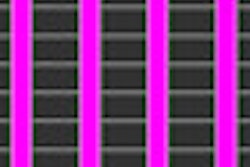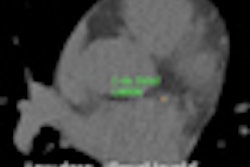Use of noninvasive diagnostic imaging in the hospital inpatient setting lagged overall imaging growth from 2000 to 2010, and the share of imaging being done on an inpatient basis dropped from 32% to 25%, said Dr. Vijay Rao from Thomas Jefferson University.
"This is of particular interest to hospital administrators, who want their radiology departments to reduce inpatient imaging utilization," Rao told attendees in a presentation at the RSNA 2012 meeting.
In other findings, use of MRI and CT grew the most over the period, while nuclear medicine usage dropped by nearly half. The study did not track PET utilization.
Rao and colleagues used Medicare Part B databases for 2000 to 2010 for the study. They assigned the applicable number of total professional component relative value units (RVUs) to each noninvasive imaging CPT code before calculating RVU rates (total professional component RVUs per 1,000 Medicare beneficiaries) by all specialties for each code.
Using Medicare's place-of-service codes, the team identified all procedures performed on hospital inpatients; codes were grouped by modality. The researchers also tracked RVU rates for all noninvasive diagnostic imaging in all places of service, as well as those rates just for inpatient procedures.
"The RVU rate is a proxy for both workload and cost and is therefore a better metric than procedure volume alone," Rao said.
The total RVU rate for all noninvasive diagnostic imaging in all places of service increased 42% over the 10-year study period, from 2,262.5 per 1,000 Medicare beneficiaries in 2000 to 3,222.1 in 2010. By comparison, the inpatient-only noninvasive diagnostic imaging RVU rate increased 11%, from 730.8 per 1,000 Medicare beneficiaries in 2000 to 813.8 in 2010, Rao's team found.
Inpatient noninvasive diagnostic imaging accounted for 32% of all noninvasive diagnostic imaging RVUs in 2000, but this decreased to 25% by 2010.
The rank order of modalities with the highest inpatient RVU rates and their percent changes since 2000 are shown in the table below.
Inpatient imaging use by modality
|
CT by far contributed the highest inpatient workload in 2010, followed by plain radiography and echocardiography, Rao and colleagues found. Inpatient workloads (as measured by RVU rates) grew over the decade for CT, MRI, and ultrasound.
The team did not include inpatient PET or bone densitometry use because utilization of these two modalities was so low, Rao said.
Between 2000 and 2010, the Medicare inpatient noninvasive diagnostic imaging workload for all specialties -- as measured by RVU rates -- increased much more slowly than total imaging rates in all places of service, at 11% compared to 42%, Rao reiterated.
"While it is not clear whether the 11% inpatient increase is appropriate, this trend may be of [interest] to hospital administrators," she said.





















